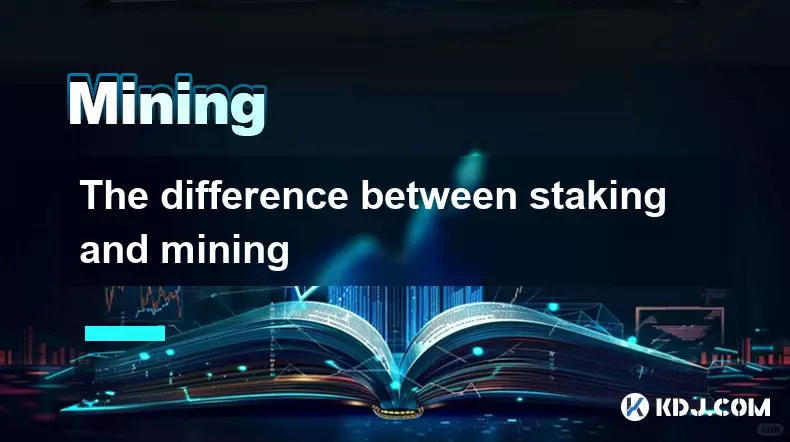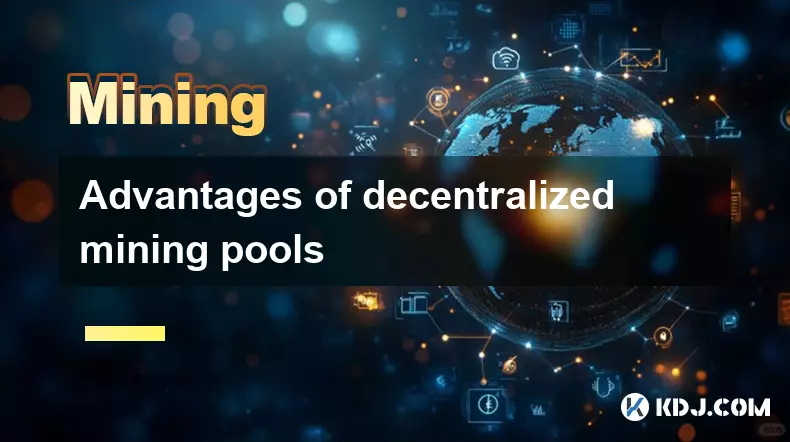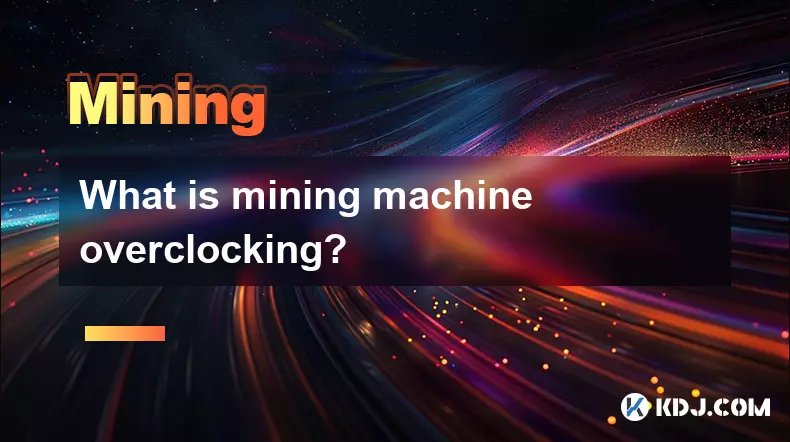-
 bitcoin
bitcoin $109547.008142 USD
0.04% -
 ethereum
ethereum $4011.838726 USD
-0.05% -
 tether
tether $1.000402 USD
-0.01% -
 xrp
xrp $2.798606 USD
0.88% -
 bnb
bnb $970.877944 USD
1.39% -
 solana
solana $202.237275 USD
-0.95% -
 usd-coin
usd-coin $0.999673 USD
0.00% -
 dogecoin
dogecoin $0.229294 USD
-1.15% -
 tron
tron $0.336370 USD
-0.45% -
 cardano
cardano $0.777260 USD
-1.66% -
 hyperliquid
hyperliquid $45.503019 USD
1.73% -
 ethena-usde
ethena-usde $1.000362 USD
0.01% -
 chainlink
chainlink $20.785303 USD
-1.10% -
 avalanche
avalanche $28.755822 USD
-0.11% -
 stellar
stellar $0.358303 USD
-0.48%
how to mine bitcoin beginner
Bitcoin mining involves solving mathematical problems using specialized hardware (ASICs), offering rewards in the form of bitcoins while securing the network through transaction verification.
Oct 23, 2024 at 07:41 am

Bitcoin mining plays a crucial role in the secure and decentralized nature of the Bitcoin network. It involves using specialized hardware to solve complex mathematical problems to verify transactions and create new bitcoins. This guide will provide a step-by-step approach to Bitcoin mining for beginners.
Step 1: Understand the Basics- Bitcoin mining involves solving complex mathematical puzzles using specialized hardware called Application-Specific Integrated Circuits (ASICs).
- Miners receive rewards in the form of bitcoins for successfully solving these puzzles.
- The mining process validates transactions, secures the network, and creates new bitcoins.
- Solo mining: Operating a mining rig independently. Requires a large investment and technical expertise.
- Cloud mining: Renting computing power from data centers. Provides lower entry barriers and reduced maintenance costs.
- Mining pools: Joining a group of miners to share computing power and rewards. Offers higher efficiency but requires a smaller share of the rewards.
- ASIC miners: Specialized hardware designed specifically for Bitcoin mining. Offer high efficiency and speed.
- GPUs (Graphics Processing Units): Can be used for mining but less efficient than ASICs. More suitable for small-scale or hobbyist mining.
- Choose a suitable location with adequate power supply and cooling.
- Connect the ASICs or GPUs to a motherboard.
- Install the necessary software and drivers.
- Configure the mining software to connect to a mining pool or control solo mining operations.
- Join a mining pool or use solo mining software to start the mining process.
- ASICs or GPUs will begin solving mathematical puzzles to find valid blocks.
- Rewards are earned based on the contribution to the network.
- Track the performance of your mining rigs through monitoring software.
- Adjust mining configurations as needed to optimize efficiency.
- Keep ASICs and GPUs well-maintained and cooled to prevent over-heating.
- Bitcoin mining requires significant upfront investment in hardware and electricity costs.
- The profitability of mining depends on various factors, including the price of bitcoins, mining difficulty, and electricity rates.
- Mining as a solo miner can be challenging, while mining pools provide a more reliable income stream but with smaller rewards.
- The mining landscape is constantly evolving, so it's essential to stay informed about advancements and optimize operations accordingly.
Disclaimer:info@kdj.com
The information provided is not trading advice. kdj.com does not assume any responsibility for any investments made based on the information provided in this article. Cryptocurrencies are highly volatile and it is highly recommended that you invest with caution after thorough research!
If you believe that the content used on this website infringes your copyright, please contact us immediately (info@kdj.com) and we will delete it promptly.
- Crypto Whales, PEPE, and Meme Coins: What's the Hype?
- 2025-09-28 18:25:15
- Cathie Wood, Hyperliquid, and Solana Development: A New Era in Crypto?
- 2025-09-28 19:05:16
- Polkadot pUSD: NYC's Take on Decentralized Stability
- 2025-09-28 18:25:15
- Chainlink, Remittix, and Price Gains: A Tale of Two Cryptos
- 2025-09-28 19:05:16
- Altcoins, Portfolios, and Millions: Decoding the Crypto Bull Run
- 2025-09-28 19:10:01
- SWIFT, Ethereum, and Linea: Revolutionizing Global Banking?
- 2025-09-28 18:30:01
Related knowledge

The difference between staking and mining
Sep 24,2025 at 05:18am
Understanding Staking in the Cryptocurrency Ecosystem1. Staking involves holding funds in a cryptocurrency wallet to support the operations of a block...

How to participate in testnet mining?
Sep 22,2025 at 09:18am
Understanding Testnet Mining in the Crypto Ecosystem1. Testnet mining is a method used by blockchain developers to simulate real-world conditions on a...

How to dispose of abandoned mining machines?
Sep 19,2025 at 08:19pm
Assessing the Condition of Abandoned Mining Rigs1. Begin by inspecting each mining machine for visible damage, corrosion, or missing components. Machi...

How to identify high-quality mining pools?
Sep 21,2025 at 03:19pm
Reputation and Track Record1. A mining pool’s reputation is built over time through consistent performance and transparency. Pools that have operated ...

Advantages of decentralized mining pools
Sep 20,2025 at 04:36pm
Enhanced Security and Resistance to Censorship1. Decentralized mining pools operate on blockchain-based smart contracts, eliminating the need for a ce...

What is mining machine overclocking?
Sep 21,2025 at 07:19pm
Understanding Mining Machine Overclocking1. Mining machine overclocking refers to the process of increasing the operating frequency of a cryptocurrenc...

The difference between staking and mining
Sep 24,2025 at 05:18am
Understanding Staking in the Cryptocurrency Ecosystem1. Staking involves holding funds in a cryptocurrency wallet to support the operations of a block...

How to participate in testnet mining?
Sep 22,2025 at 09:18am
Understanding Testnet Mining in the Crypto Ecosystem1. Testnet mining is a method used by blockchain developers to simulate real-world conditions on a...

How to dispose of abandoned mining machines?
Sep 19,2025 at 08:19pm
Assessing the Condition of Abandoned Mining Rigs1. Begin by inspecting each mining machine for visible damage, corrosion, or missing components. Machi...

How to identify high-quality mining pools?
Sep 21,2025 at 03:19pm
Reputation and Track Record1. A mining pool’s reputation is built over time through consistent performance and transparency. Pools that have operated ...

Advantages of decentralized mining pools
Sep 20,2025 at 04:36pm
Enhanced Security and Resistance to Censorship1. Decentralized mining pools operate on blockchain-based smart contracts, eliminating the need for a ce...

What is mining machine overclocking?
Sep 21,2025 at 07:19pm
Understanding Mining Machine Overclocking1. Mining machine overclocking refers to the process of increasing the operating frequency of a cryptocurrenc...
See all articles









































































